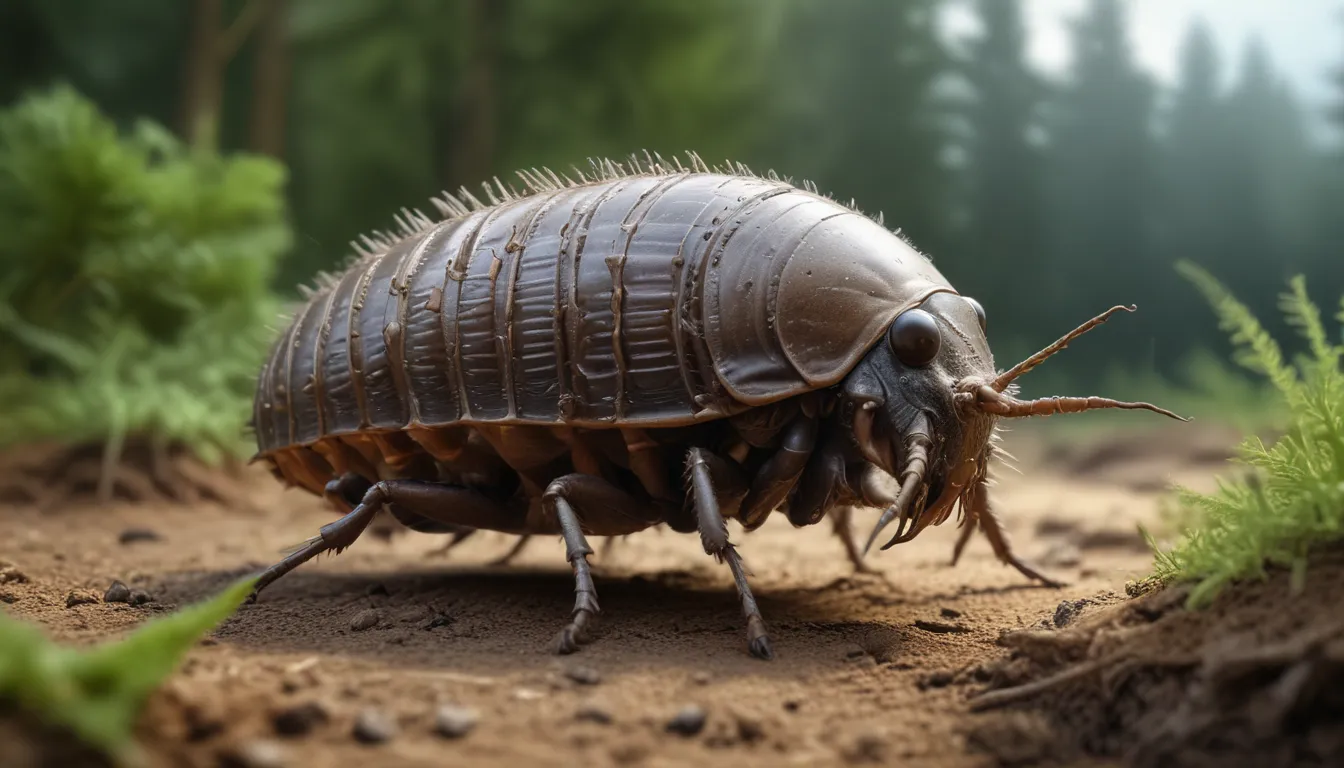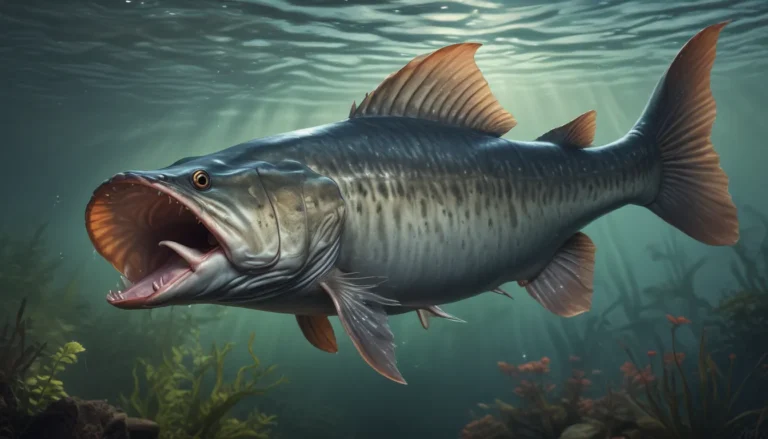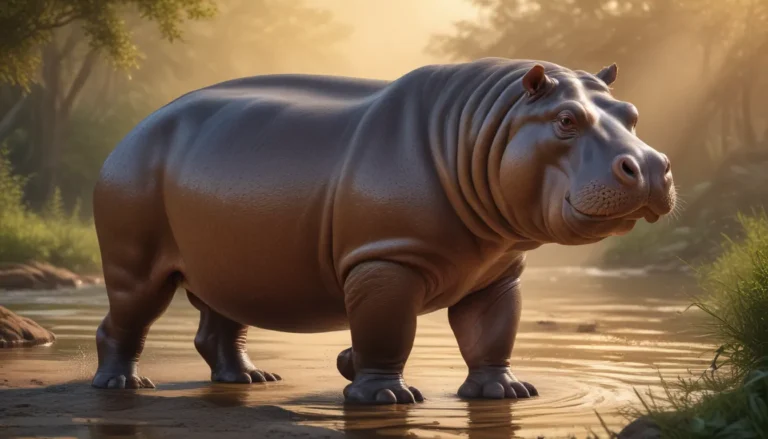The pictures we use in our articles might not show exactly what the words say. We choose these pictures to make you interested in reading more. The pictures work together with the words but don’t take their place. The words still tell you the important facts.
Welcome to the wonderful world of sow bugs! These small crustaceans, also known as woodlice or pill bugs, are fascinating creatures that play a significant role in nature. In this article, we will delve into 11 interesting facts about sow bugs that will surely captivate your interest. From their unique defense mechanisms to their essential role in ecosystem maintenance, sow bugs have a lot to offer. So, let's embark on a journey to uncover the secrets of these tiny crawlers!
Key Takeaways:
- Sow bugs, also known as woodlice or pill bugs, are small creatures that contribute to the ecosystem by breaking down decaying matter and recycling nutrients, ensuring a healthy environment for all living organisms.
- These nocturnal, armadillo-like critters are harmless to humans and rely on moisture to survive. Their role as decomposers is vital, and they use their sensitive antennae to navigate their surroundings effectively.
Habitat: Where Do Sow Bugs Thrive?
Sow bugs are commonly found in damp and dark environments, such as gardens, under rocks, logs, and leaf litter. They prefer moisture-rich areas to flourish and play a crucial role in the decomposition of organic matter.
Diet: What Do Sow Bugs Eat?
As detrivores, sow bugs primarily feed on decaying organic matter, including dead plants and animals. By breaking down organic material, they aid in the recycling of nutrients, promoting healthy soil conditions.
Armadillo-like Defense: How Do Sow Bugs Protect Themselves?
When threatened, sow bugs have a fascinating defense mechanism – they can roll their bodies into a tight ball, resembling an armadillo. This behavior helps shield their vulnerable undersides from predators, ensuring their safety in the wild.
Lifespan: How Long Do Sow Bugs Live?
On average, sow bugs have a lifespan of around two years, but under favorable conditions, they can survive up to three years. Their longevity is influenced by environmental factors, including temperature and humidity levels.
Breeding and Reproduction: The Life Cycle of Sow Bugs
Sow bugs undergo direct development, bypassing a larval stage. Females lay eggs that hatch into miniature versions of the adults, ensuring a seamless transition into the next generation.
Moisture Dependency: Why Do Sow Bugs Need Water?
Due to their high moisture requirements, sow bugs tend to avoid dry environments. They rely on water for respiration, making habitats with a humidity level above 50% ideal for their survival.
Nocturnal Creatures: When Are Sow Bugs Most Active?
Sow bugs are predominantly active during the night, scavenging for food and seeking shelter under the cover of darkness. Their peak activity occurs in the spring and summer months when conditions are optimal for their habits.
Armored Exoskeleton: The Protective Layer of Sow Bugs
Like all crustaceans, sow bugs possess a hard exoskeleton that provides protection and structural support. Through the molting process, they shed their old exoskeleton and develop a new one as they grow.
Decomposition Role: The Contribution of Sow Bugs in Ecosystems
Sow bugs serve as essential decomposers in ecosystems, aiding in the breakdown of decaying matter and facilitating the recycling of nutrients back into the soil. Their feeding habits play a crucial role in maintaining the balance of nature.
Sensory Abilities: How Do Sow Bugs Navigate Their Environment?
Sow bugs possess two pairs of antennae that they rely on to explore and sense their surroundings. These antennae are highly sensitive to touch, vibrations, and chemical cues in their environment, aiding in their survival and navigation.
Harmless to Humans: Mythbusting About Sow Bugs
Despite their appearance, sow bugs are harmless to humans and do not pose any threats. They do not bite, sting, or transmit diseases, making them safe and beneficial creatures to have in natural habitats.
Conclusion
In conclusion, sow bugs may be small in size, but their impact on the ecosystem is significant. From their role as decomposers to their unique characteristics, these creatures offer valuable insights into the complexities of nature. Whether you encounter them in your garden or stumble upon them in a dark corner, take a moment to appreciate the essential work sow bugs do in maintaining the ecological balance.
FAQs
- What do sow bugs eat?
-
Sow bugs primarily feed on decaying organic matter like fallen leaves, dead plants, and rotting wood, contributing to nutrient recycling in the soil.
-
Can sow bugs damage my garden?
-
While sow bugs may nibble on young seedlings, they generally do not cause severe damage to established plants. Their presence can benefit soil health and fertility.
-
Are sow bugs dangerous to humans?
-
No, sow bugs are harmless to humans and do not pose any risks. They are gentle creatures that prefer to avoid human interaction.
-
How do sow bugs reproduce?
-
Sow bugs undergo direct development, with the female carrying developing eggs in a brood pouch until they hatch as live young.
-
How can I prevent sow bugs from entering my home?
- To deter sow bugs from entering your home, seal gaps and cracks, maintain a dry environment, and ensure proper ventilation to reduce moisture levels.
As you explore the diverse world of sow bugs, remember to appreciate the intricate balance of nature that these small creatures contribute to. Embrace their presence in your surroundings, knowing that they play a vital role in preserving the beauty and harmony of our ecosystem.






